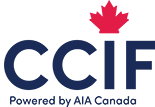Many advanced driver assistance systems (ADAS) require static calibration. This is when scan tool, targets, and other specialized equipment calibrate cameras and sensors while the vehicle is stationary.
Here are four things for you to consider with static calibration.
1. The right tools
Many static calibrations require special tools, including: targets, reflectors, levels, scan tools, digital angle gauges, and floor mats. Sometimes, simple things like cardboard, tape, string, and a tape measure are used. The tools required are specified in the calibration procedure, most of the time.
In order to keep the vehicle from shutting down while calibrating, a battery charger/maintainer is another important piece of equipment.
2. Enough space
For some calibrations, OEMs require you have a certain distance of flat, open space around the vehicle for the camera and sensor to calibrate properly. You should check the service information for the required space before starting your calibrations.
3. Service information
Before getting started, you’ll need the repair manual or service manual instructions. Every step must be followed to make sure the camera or sensor is correctly calibrated. Some of these steps are simple things like checking tire pressures, removing the owner’s belongings from the vehicle, and checking fuel levels. Be sure to check the service information each time a calibration is needed and follow the steps just in case the procedure has changed.
4. Enough time
Make sure you give yourself enough time! Some calibrations can be intricate and complex and precise measurements and target set-up are required. This can mean more steps than expected.
When it comes to calibrating ADAS, always follow OEM procedures to ensure a complete, safe, and quality repair.
Interested in getting started in ADAS and static calibration? Check out the courses on the I-Car Canada website.
